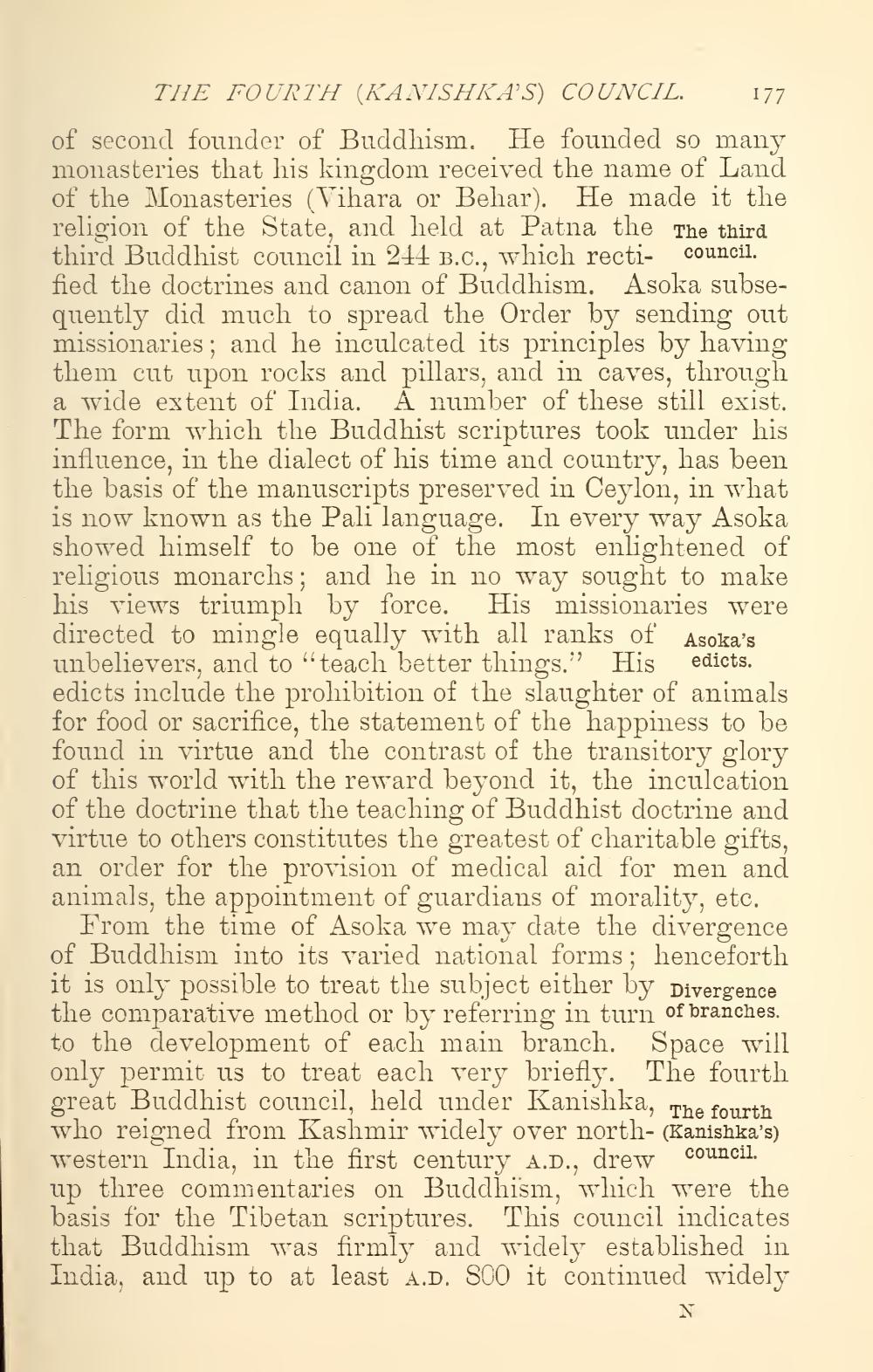________________
THE FOURTH (K’AVISHKA'S) COUNCIL. 177 of second founder of Buddhism. He founded so many monasteries that his kingdom received the name of Land of the Monasteries (Vihara or Behar). He made it the religion of the State, and held at Patna the The third third Buddhist council in 214 B.C., which recti- council. fied the doctrines and canon of Buddhism. Asoka subsequently did much to spread the Order by sending out missionaries; and he inculcated its principles by having them cut upon rocks and pillars, and in caves, through a wide extent of India. A number of these still exist. The form which the Buddhist scriptures took under his influence, in the dialect of his time and country, has been the basis of the manuscripts preserved in Ceylon, in what is now known as the Pali language. In every way Asoka showed himself to be one of the most enlightened of religious monarchs; and he in no way sought to make his views triumph by force. His missionaries were directed to mingle equally with all ranks of Asoka's unbelievers, and to “teach better things." His edicts. edicts include the prohibition of the slaughter of animals for food or sacrifice, the statement of the happiness to be found in virtue and the contrast of the transitory glory of this world with the reward beyond it, the inculcation of the doctrine that the teaching of Buddhist doctrine and virtue to others constitutes the greatest of charitable gifts, an order for the provision of medical aid for men and animals, the appointment of guardians of morality, etc.
From the time of Asoka we may date the divergence of Buddhism into its varied national forms; henceforth it is only possible to treat the subject either by Divergence the comparative method or by referring in turn of branches. to the development of each main branch. Space will only permit us to treat each very briefly. The fourth great Buddhist council, held under Kanishka, The fourth who reigned from Kashmir widely over north- (Kanishka's) western India, in the first century A.D., drew council. up three commentaries on Buddhism, which were the basis for the Tibetan scriptures. This council indicates that Buddhism was firmly and widely established in India, and up to at least A.D. SOO it continued widely




